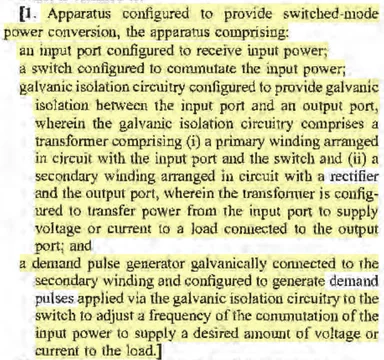
Today, in Personal Audio v. Google, C.A. No. 17-1751-CFC-CJB (D. Del.), Judge Burke addressed an apparent request for the Court to find non-infringement based on a claim construction issue, which came up for the first time in the context of a Daubert motion to exclude expert testimony.
The Court expressed some initial sympathy for the non-infringement argument, suggesting it may have had some merit:
[T]he Court notes more generally that the issue underlying Defendant’s Motion is Defendant’s assertion that the claim construction for “sequencing file,” . . . requires that “you can’t use a copy of the sequencing file to control playback and respon[d] to commands, you have to use the received file[,]” . . . . The Court notes that it agrees with Defendant that, based on the claim construction process that led to the construction for “sequencing file,” this understanding of the meaning of the construction is accurate.
That said, however, the Court found that it was inappropriate to address non-infringement in the context of a Daubert motion:
However, it appears that Plaintiff points to at least certain instances of GPM’s operation that it contends comport with this interpretation of the Court’s construction. . . . Moreover, this is not a summary judgment motion. So on this record (i.e., where the back and forth regarding these infringement theories occurred in answering and reply briefs relating to a Daubert motion), it is not appropriate for the Court to do what Defendant wants it to do—to make a finding of non-infringement (i.e., a finding that “PA cannot rely solely on Cases 1, 2 and/or 3 to demonstrate infringement”).
Defendant must have seen this coming, as it apparently requested leave, in a footnote, to file a summary judgement motion on this issue. Judge Burke denied that request because the parties had already filed ten summary judgment motions, including seven by Defendant:
Finally, Defendant’s request for leave to file a summary judgment motion on “sequencing file[,]” which was made in a footnote of its reply brief . . . is DENIED. The parties have had ample opportunity to raise summary judgment and Daubert issues via a robust case-dispositive-stage motion process. Indeed, the Court thinks that the process was too robust, as the parties (as parties regularly do in patent cases in this District), see Dali Wireless, Inc. v. CommScope Techs. LLC [discussed here], filed an outsized number of motions at the summary judgment/Daubert stage (there were 10 total, and Defendant filed seven of them . . . ). Few of those were meritorious. [S]urely no additional summary judgment filing is warranted here.
The Court also said that further efforts to control the proliferation of summary judgment motions in patent cases are needed at some point:
In future cases, the Court will need to figure out how to better deal with how the summary judgment/Daubert process in patent cases has gotten so out of control.
That sentiment is shared by at least some of the other judges, as we've covered at length previously. We'll certainly keep an eye out for further efforts in that regard.
(This opinion issued in late January, but was under seal until today.)
If you enjoyed this post, consider subscribing to receive free e-mail updates about new posts.




